An Evaluation of the Strength for Recycled Fine Aggregate Replacement in Cementitious Mortars
Abstract
1. Introduction
1.1. Aim
1.2. Contribution and Significance of the Study
1.3. Performance of RCA
1.4. Additives and Plasticisers
2. Materials and Methods
2.1. Materials
2.1.1. Cement
2.1.2. Aggregates
2.2. Mortar Design Mixes
2.3. Specimen and Curing
2.4. Tests
Compressive and Flexural Strength
3. Results
3.1. Compressive Strength
3.2. Flexural Test
4. Discussion
5. Conclusions
- In the context of the mix designs, workability can be achieved by incorporating 5% water. As such, the water-to-cement ratio needed to achieve the desired workability is 0.45.
- The compressive tests conducted on aggregates containing Recycled Concrete Aggregates (RCA) at various percentages did not reveal a significant reduction in strength compared to findings in the previous literature. Furthermore, the correlation between the amount of RCA in a mix and strength was found to be insignificant. Consequently, incorporating any amount of RCA using the materials in this study is not anticipated to impact strength significantly. A similar conclusion can be drawn for flexural strength, although it is worth noting that the results for the 40% RCA exhibited a notable reduction when compared to the flexural strength of Standard Sand (SS) samples.
- The compressive strength values obtained in this study for samples with RCA, when compared to those of SS, were closest in value for the 50% RCA. This finding aligns with results from the previous literature, indicating that adopting a 50% RCA replacement can provide compressive and flexural strengths nearly identical to those of SS samples.
Author Contributions
Funding
Data Availability Statement
Conflicts of Interest
References
- Miatto, A.; Schandl, H.; Fishman, T.; Tanikawa, H. Global Patterns and Trends for Non-Metallic Minerals used for Construction. J. Ind. Ecol. 2017, 21, 924–937. [Google Scholar] [CrossRef]
- de Bortoli, A. Understanding the environmental impacts of virgin aggregates: Critical literature review and primary comprehensive life cycle assessments. J. Clean. Prod. 2023, 415, 137629. [Google Scholar] [CrossRef]
- Langer, W.H.; Arbogast, B.F. Environmental Impacts of Mining Natural Aggregate. In Deposit and Geoenvironmental Models for Resource Exploitation and Environmental Security; Springer: Dordrecht, The Netherlands, 2002; pp. 151–169. [Google Scholar] [CrossRef]
- Li, X. Recycling and reuse of waste concrete in China. Resour. Conserv. Recycl. 2008, 53, 36–44. [Google Scholar] [CrossRef]
- Le, H.B.; Bui, Q.B. Recycled aggregate concretes—A state-of-the-art from the microstructure to the structural performance. Constr. Build. Mater. 2020, 252, 119522. [Google Scholar] [CrossRef]
- Nodehi, M.; Taghvaee, V.M. Applying Circular Economy to Construction Industry through Use of Waste Materials: A Review of Supplementary Cementitious Materials, Plastics, and Ceramics. Circ. Econ. Sustain. 2022, 2, 987–1020. [Google Scholar] [CrossRef]
- Cherian, C.; Siddiqua, S.; Arnepalli, D.N. Utilization of Recycled Industrial Solid Wastes as Building Materials in Sustainable Construction. In Advances in Sustainable Materials and Resilient Infrastructure; Springer: Singapore, 2022; pp. 61–75. [Google Scholar] [CrossRef]
- Wang, B.; Yan, L.; Fu, Q.; Kasal, B. A Comprehensive Review on Recycled Aggregate and Recycled Aggregate Concrete. Resour. Conserv. Recycl. 2021, 171, 105565. [Google Scholar] [CrossRef]
- Gálvez-Martos, J.L.; Styles, D.; Schoenberger, H.; Zeschmar-Lahl, B. Construction and demolition waste best management practice in Europe. Resour. Conserv. Recycl. 2018, 136, 166–178. [Google Scholar] [CrossRef]
- Zhang, C.; Hu, M.; Di Maio, F.; Sprecher, B.; Yang, X.; Tukker, A. An overview of the waste hierarchy framework for analyzing the circularity in construction and demolition waste management in Europe. Sci. Total Environ. 2022, 803, 149892. [Google Scholar] [CrossRef]
- Zhang, Y.; Luo, W.; Wang, J.; Wang, Y.; Xu, Y.; Xiao, J. A review of life cycle assessment of recycled aggregate concrete. Constr. Build. Mater. 2019, 209, 115–125. [Google Scholar] [CrossRef]
- Shi, X.; Mukhopadhyay, A.; Zollinger, D.; Grasley, Z. Economic input-output life cycle assessment of concrete pavement containing recycled concrete aggregate. J. Clean. Prod. 2019, 225, 414–425. [Google Scholar] [CrossRef]
- Serres, N.; Braymand, S.; Feugeas, F. Environmental evaluation of concrete made from recycled concrete aggregate implementing life cycle assessment. J. Build. Eng. 2016, 5, 24–33. [Google Scholar] [CrossRef]
- Neno, C.; De Brito, J.; Veiga, R. Using fine recycled concrete aggregate for mortar production. Mater. Res. 2014, 17, 168–177. [Google Scholar] [CrossRef]
- Samiei, R.R.; Daniotti, B.; Pelosato, R.; Dotelli, G. Properties of cement-lime mortars vs. cement mortars containing recycled concrete aggregates. Constr. Build. Mater. 2015, 84, 84–94. [Google Scholar] [CrossRef]
- Vaishnav, S.K.; Trivedi, M.K. Performance assessment of sustainable mortar mixes using recycled fine aggregate obtained from different processing techniques. Environ. Dev. Sustain. 2023. [Google Scholar] [CrossRef]
- Jiang, Y.; Li, B.; Liu, S.; He, J.; Hernandez, A.G. Role of recycled concrete powder as sand replacement in the properties of cement mortar. J. Clean. Prod. 2022, 371, 133424. [Google Scholar] [CrossRef]
- Kul, A.; Ozel, B.F.; Ozcelikci, E.; Gunal, M.F.; Ulugol, H.; Yildirim, G.; Sahmaran, M. Characterization and life cycle assessment of geopolymer mortars with masonry units and recycled concrete aggregates assorted from construction and demolition waste. J. Build. Eng. 2023, 78, 107546. [Google Scholar] [CrossRef]
- Nazir, K.; Canpolat, O.; Uysal, M. Durability properties of steel, polyamide, and polyethylene fiber-reinforced geopolymer mortar made with recycled concrete aggregate and glass powder as fillers. J. Build. Eng. 2023, 76, 107313. [Google Scholar] [CrossRef]
- Vegas, I.; Azkarate, I.; Juarrero, A.; Frías, M. Diseño y prestaciones de morteros de albañilería elaborados con áridos reciclados procedentes de escombro de hormigón. Mater. Constr. 2009, 59, 5–18. [Google Scholar] [CrossRef]
- Ledesma, E.F.; Jiménez, J.R.; Fernández, J.M.; Galvín, A.P.; Agrela, F.; Barbudo, A. Properties of masonry mortars manufactured with fine recycled concrete aggregates. Comput. Chem. Eng. 2014, 71, 289–298. [Google Scholar] [CrossRef]
- Singh, A.; Miao, X.; Zhou, X.; Deng, Q.; Li, J.; Zou, S.; Duan, Z. Use of recycled fine aggregates and recycled powders in sustainable recycled concrete. J. Build. Eng. 2023, 77, 107370. [Google Scholar] [CrossRef]
- Çakir, O. Experimental analysis of properties of recycled coarse aggregate (RCA) concrete with mineral additives. Constr. Build. Mater. 2014, 68, 17–25. [Google Scholar] [CrossRef]
- Beltrán, M.G.; Barbudo, A.; Agrela, F.; Galvín, A.P.; Jiménez, J.R. Effect of cement addition on the properties of recycled concretes to reach control concretes strengths. J. Clean. Prod. 2014, 79, 124–133. [Google Scholar] [CrossRef]
- Martínez-García, R.; de Rojas, M.I.S.; Pozo, J.M.M.; Fraile-Fernández, F.J.; Juan-Valdés, A. Evaluation of Mechanical Characteristics of Cement Mortar with Fine Recycled Concrete Aggregates (FRCA). Sustainability 2021, 13, 414. [Google Scholar] [CrossRef]
- Zhao, Z.; Remond, S.; Damidot, D.; Xu, W. Influence of fine recycled concrete aggregates on the properties of mortars. Constr. Build. Mater. 2015, 81, 179–186. [Google Scholar] [CrossRef]
- Corinaldesi, V.; Moriconi, G. Influence of mineral additions on the performance of 100% recycled aggregate concrete. Constr. Build. Mater. 2009, 2869, 23–2876. [Google Scholar] [CrossRef]
- Barragán-Ramos, A.; Ríos-Fresneda, C.; Lizarazo-Marriaga, J.; Hernández-Romero, N. Rebar corrosion and ASR durability assessment of fly ash concrete mixes using high contents of fine recycled aggregates. Constr. Build. Mater. 2022, 349, 128759. [Google Scholar] [CrossRef]
- Silva, R.V.; de Brito, J.; Dhir, R.K. Fresh-state performance of recycled aggregate concrete: A review. Constr. Build. Mater. 2018, 178, 19–31. [Google Scholar] [CrossRef]
- Tegguer, A.D. Determining the water absorption of recycled aggregates utilizing hydrostatic weighing approach. Constr. Build. Mater. 2012, 27, 112–116. [Google Scholar] [CrossRef]
- Verian, K.P.; Ashraf, W.; Cao, Y. Properties of recycled concrete aggregate and their influence in new concrete production. Resour. Conserv. Recycl. 2018, 133, 30–49. [Google Scholar] [CrossRef]
- Ouyang, K.; Liu, J.; Liu, S.; Song, B.; Guo, H.; Li, G.; Shi, C. Influence of pre-treatment methods for recycled concrete aggregate on the performance of recycled concrete: A review. Resour. Conserv. Recycl. 2023, 188, 106717. [Google Scholar] [CrossRef]
- Kalinowska-Wichrowska, K.; Pawluczuk, E.; Bołtryk, M.; Jimenez, J.R.; Fernandez-Rodriguez, J.M.; Morales, D.S. The Performance of Concrete Made with Secondary Products—Recycled Coarse Aggregates, Recycled Cement Mortar, and Fly Ash–Slag Mix. Materials 2022, 15, 1438. [Google Scholar] [CrossRef]
- Limbachiya, M.; Meddah, M.S.; Ouchagour, Y. Use of recycled concrete aggregate in fly-ash concrete. Constr. Build. Mater. 2011, 27, 439–449. [Google Scholar] [CrossRef]
- Li, X.; Gress, D.L. Mitigating Alkali–Silica Reaction in Concrete Containing Recycled Concrete Aggregate. 2016. Available online: https://journals.sagepub.com/doi/abs/10.1177/0361198106197900105?journalCode=trra (accessed on 31 January 2024).
- Nuaklong, P.; Jongvivatsakul, P.; Pothisiri, T.; Sata, V.; Chindaprasirt, P. Influence of rice husk ash on mechanical properties and fire resistance of recycled aggregate high-calcium fly ash geopolymer concrete. J. Clean. Prod. 2020, 252, 119797. [Google Scholar] [CrossRef]
- Théréné, F.; Keita, E.; Naël-Redolfi, J.; Boustingorry, P.; Bonafous, L.; Roussel, N. Water absorption of recycled aggregates: Measurements, influence of temperature and practical consequences. Cem. Concr. Res. 2020, 137, 106196. [Google Scholar] [CrossRef]
- Gebremariam, A.T.; Vahidi, A.; Di Maio, F.; Moreno-Juez, J.; Vegas-Ramiro, I.; Łagosz, A.; Mróz, R.; Rem, P. Comprehensive study on the most sustainable concrete design made of recycled concrete, glass and mineral wool from C&D wastes. Constr. Build. Mater. 2021, 273, 121697. [Google Scholar] [CrossRef]
- Raman, J.V.M.; Ramasamy, V. Various treatment techniques involved to enhance the recycled coarse aggregate in concrete: A review. Mater. Today Proc. 2021, 6356, 45–6363. [Google Scholar] [CrossRef]
- BS EN 480; Admixtures for Concrete, Mortar and Grout—Test Methods. British Standards Institution (BSI): London, UK, 2023.
- BS EN 197-1:2011; Cement. Composition, Specifications and Conformity Criteria for Common Cements. British Standards Institution (BSI): London, UK, 2019.
- Tarmac. ‘Technical Information Snowcrete’, 2018. Available online: https://tarmac-bluecircle.co.uk/wp-content/uploads/2020/02/Bulk-Snowcrete-data-sheet.pdf (accessed on 1 February 2024).
- BS EN 993-2:1995; Methods of Test for Dense Shaped Refractory Products. British Standards Institution (BSI): London, UK, 2004.
- BS EN 998-1:2016; Specification for Mortar for Masonry. British Standards Institution (BSI): London, UK, 2020.
- BS EN 1015-11:2019; Methods of Test for Mortar for Masonry. British Standards Institution (BSI): London, UK, 2019.
- Morón, A.; Ferrández, D.; Saiz, P.; Vega, G.; Morón, C. Influence of Recycled Aggregates on the Mechanical Properties of Synthetic Fibers-Reinforced Masonry Mortars. Infrastructures 2021, 6, 84. [Google Scholar] [CrossRef]
- Garg, N.; Shrivastava, S. A review on utilization of recycled concrete aggregates (RCA) and ceramic fines in mortar application. Mater. Today Proc. 2023, 73, 64–73. [Google Scholar] [CrossRef]
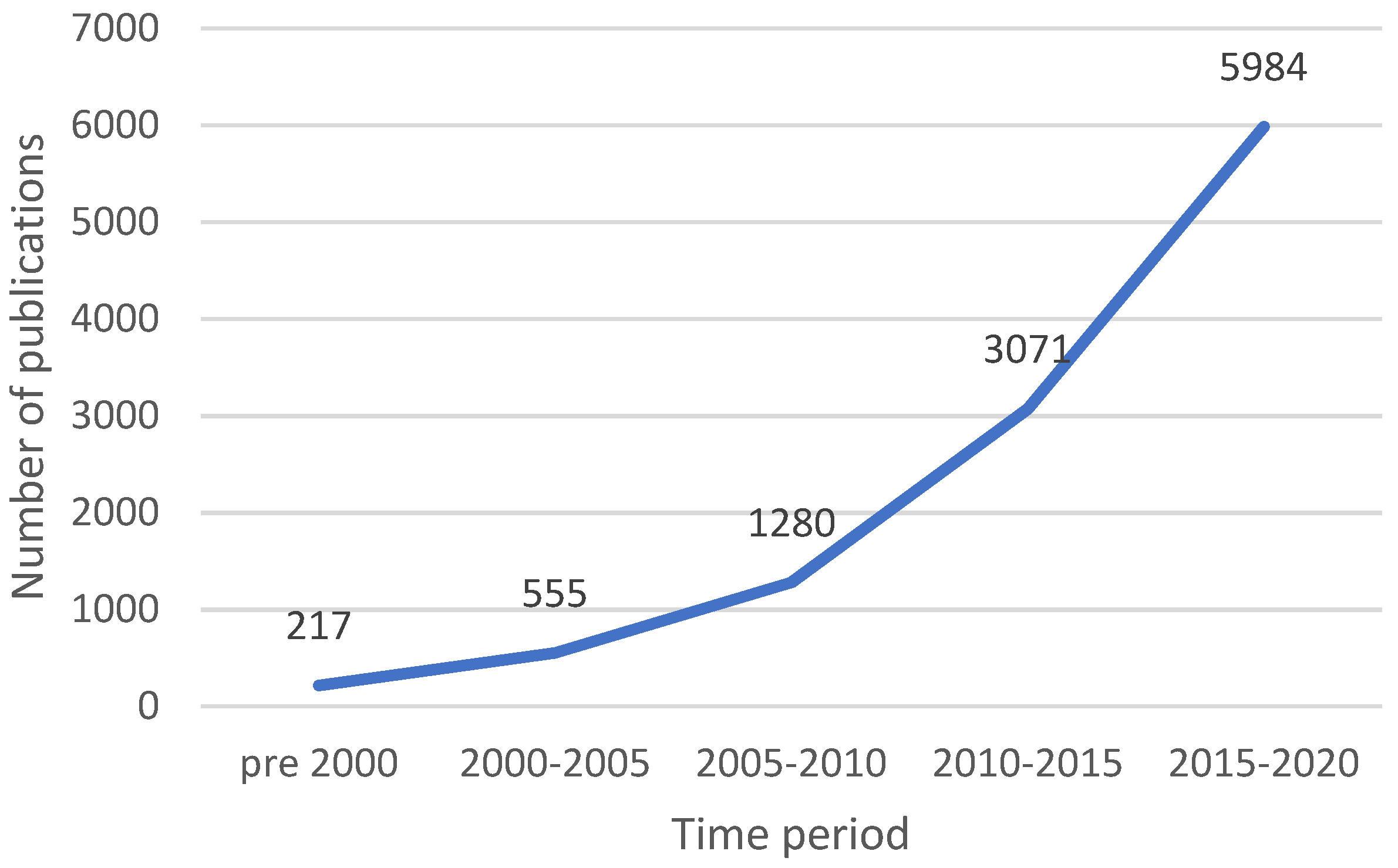

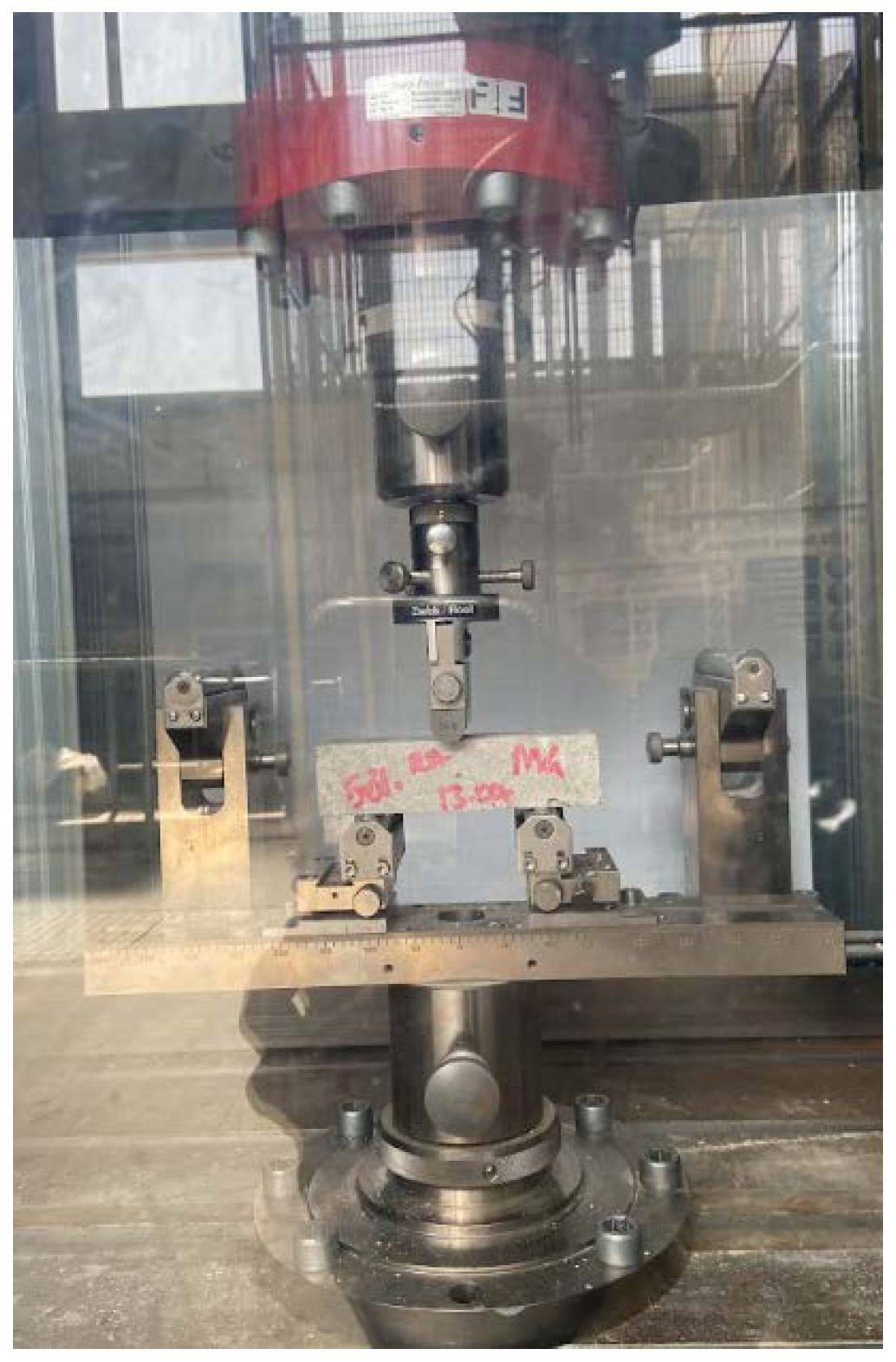

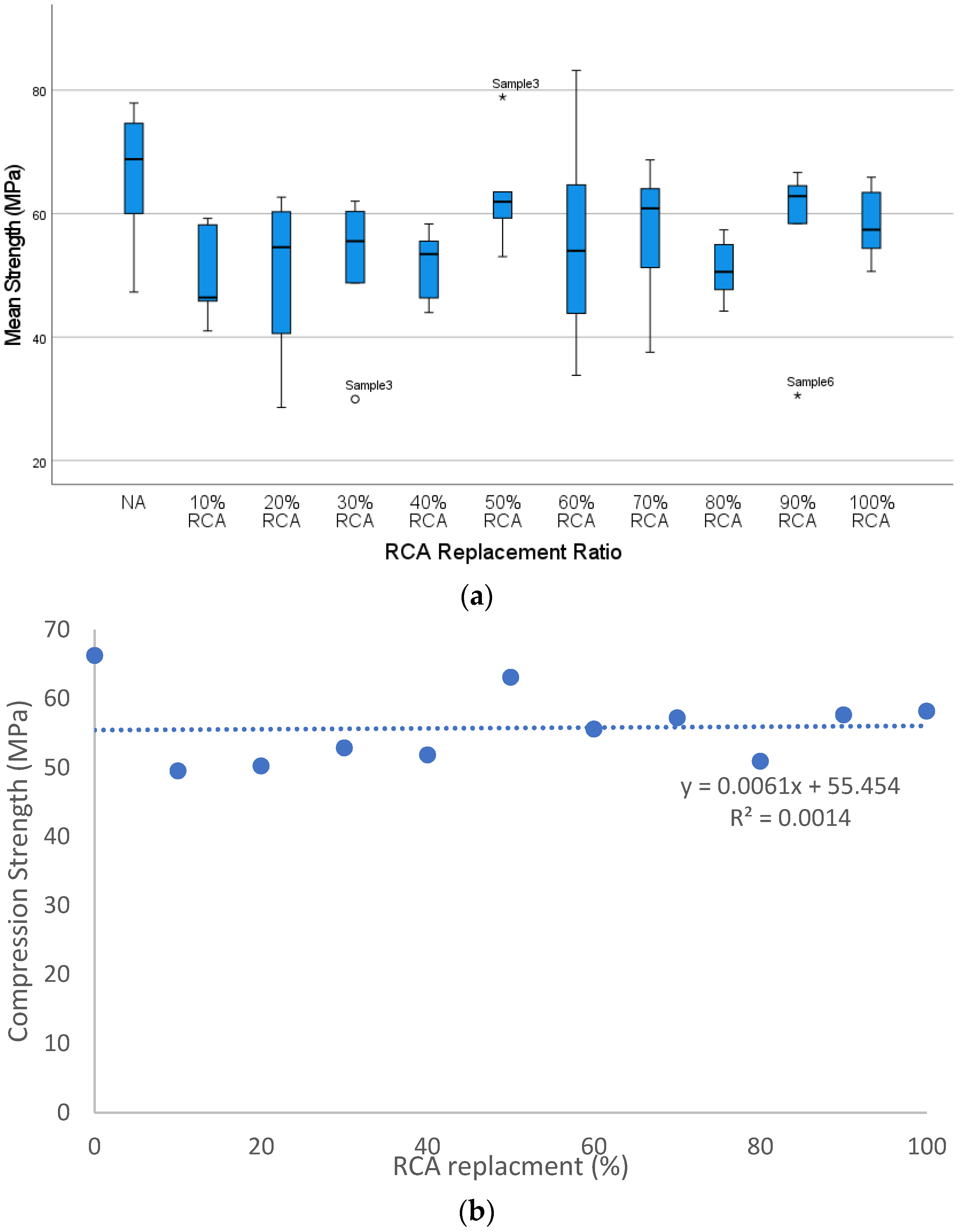

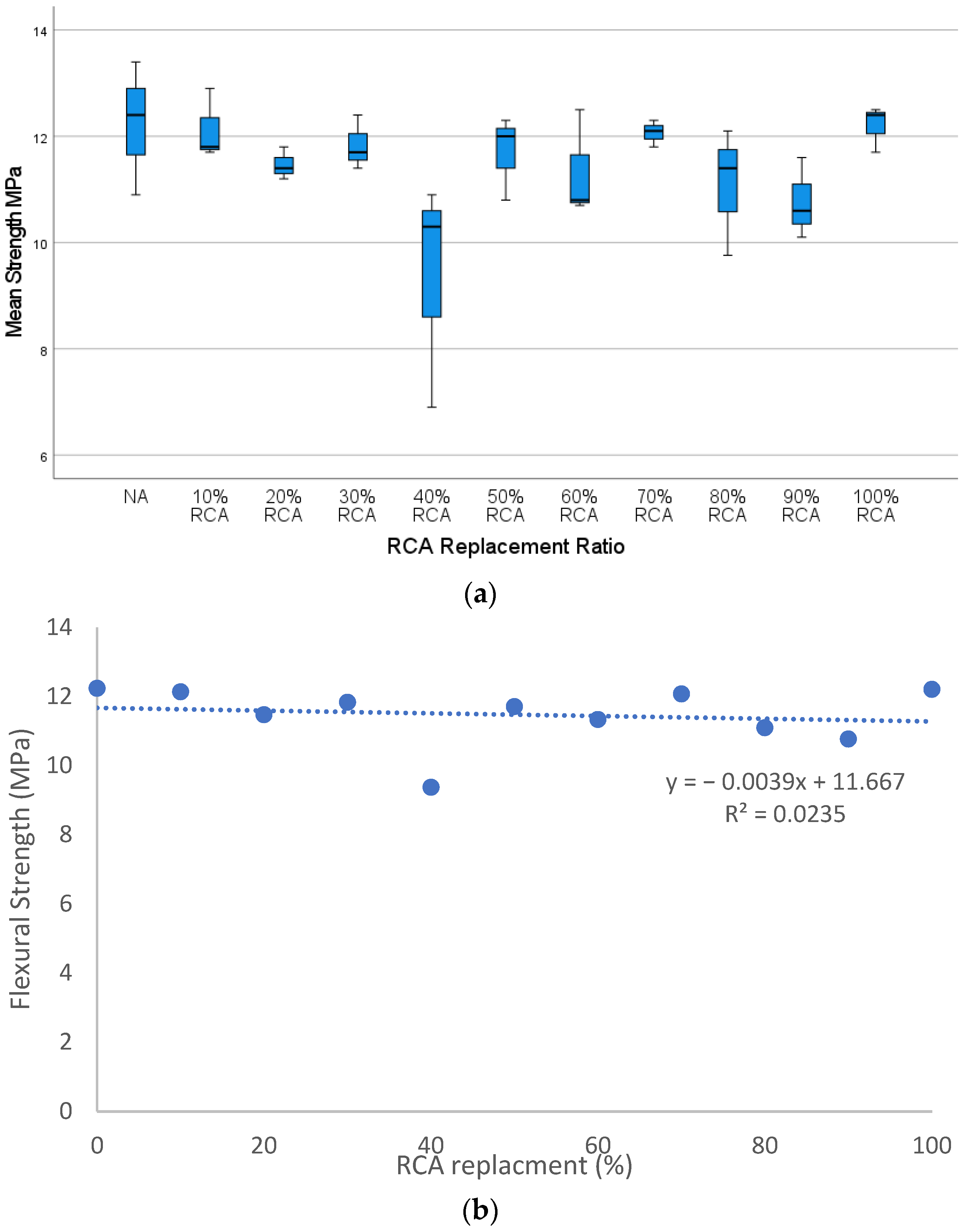
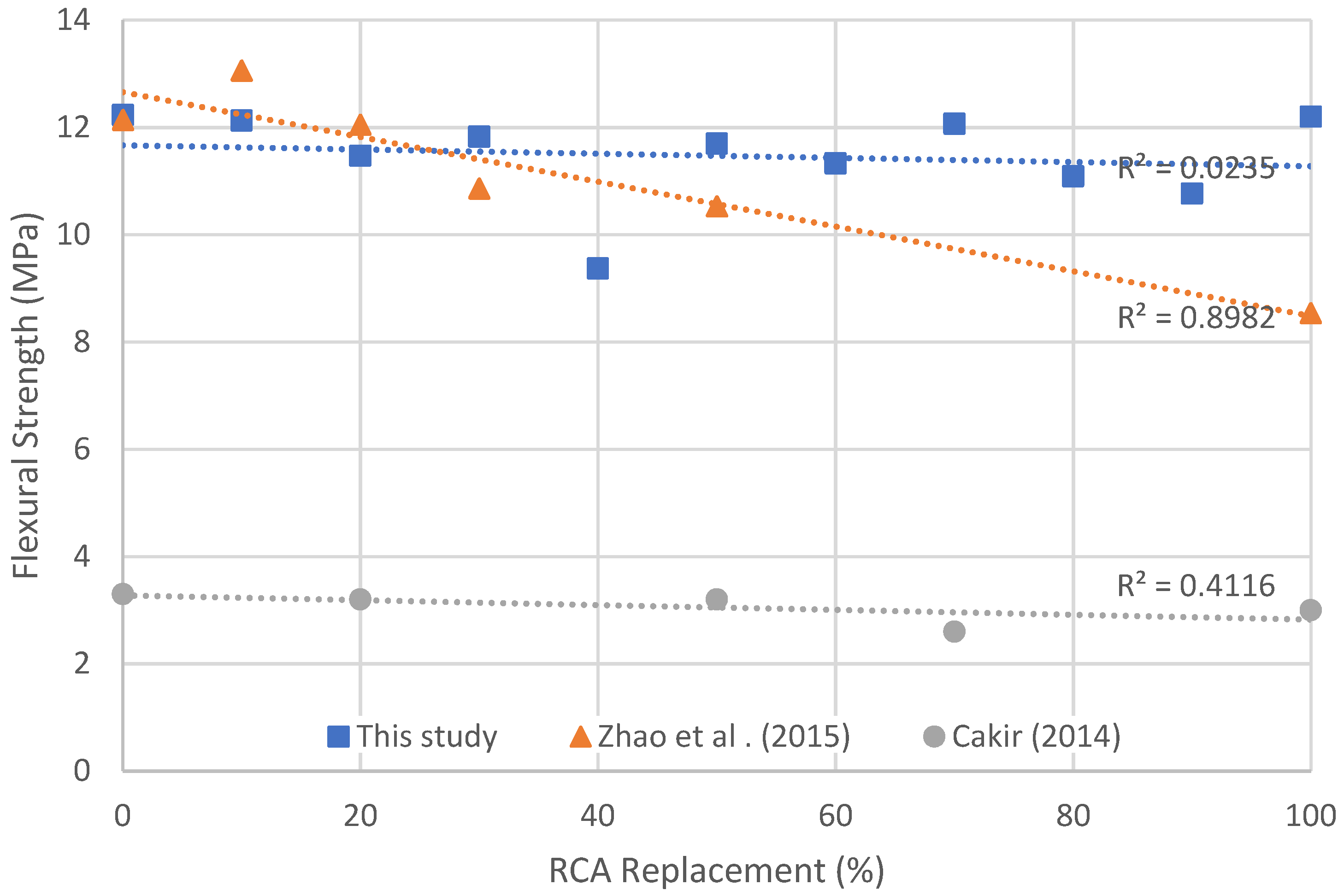
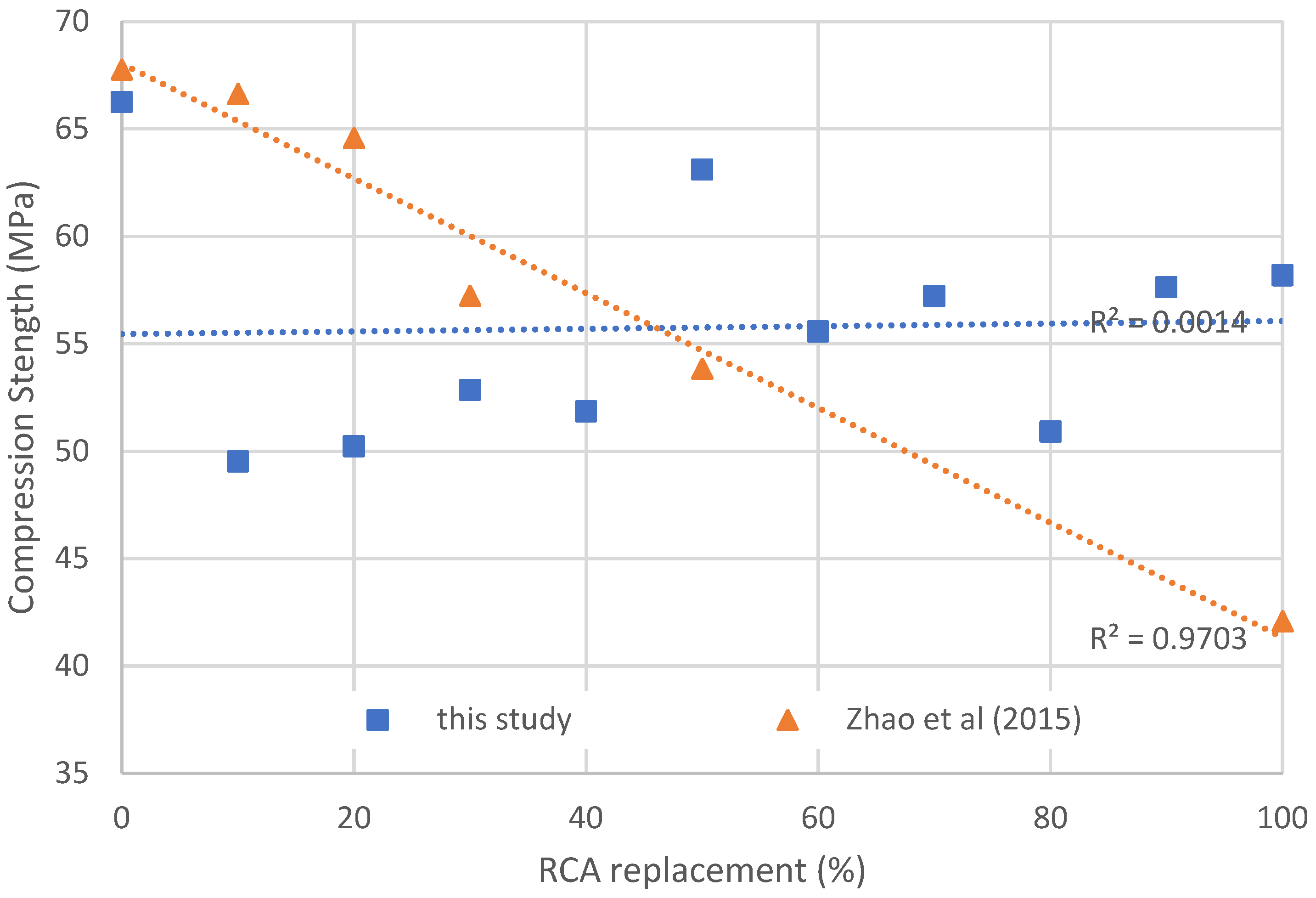
| Authors | Focus | Type of Parent Material Used for Creating RCA | RCA Replacement Ratio (%) |
|---|---|---|---|
| [22] | Fine aggregates in concrete | Ordinary Portland type I 42.5 N | 0, 20, 45, 70, 100 |
| [5] | Construction demolition waste in concrete | Construction demolition waste | 0, 30, 50, 100 |
| [23] | Recycled coarse aggregates with mineral additives | Ordinary Portland type I 42.5 N | 0, 25, 50, 75, 100 |
| [24] | Cement additives on recycled concrete | Ordinary Portland type I 42.5 N | 0, 20, 50, 100 |
| [14] | Recycled fine aggregates in mortar | Portland Type II cement 32.5 N | 0, 20, 50, 100 |
| [15] | Cement mortars with RCA | Portland Type II cement 32.5 N | 0, 25, 50, 100 |
| [18] | Geopolymer mortar with RCA | Construction demolition waste | 0, 100 |
| [25] | Evaluating mechanical properties of cement mortar with fine recycled aggregates | Ordinary Portland type I 42.5 N | 0, 25, 50, 100 |
| [26] | Strength and durability cycled fine aggregates in mortar applications | Recycled sand obtained from recycling platform | 0, 10, 20, 30, 50, 100 |
| Chemical Characteristics | Portland Cement Type I 52.5 N (%) | Portland Cement Type I 42.5 N (%) [20] |
|---|---|---|
| SiO2 | 22.44 | 22.43 |
| CaO | 62.16 | 56.40 |
| Al2O3 | 4.80 | 6.83 |
| Fe2O3 | 3.44 | 2.82 |
| MgO | 1.43 | 2.11 |
| SO3 | 3.20 | 3.04 |
| Na2O | 0.57 | - |
| K2O | 0.62 | - |
| Cl | 0.07 | - |
| Fineness (m2/kg) | 353 | 369 |
| Setting time (mins) | 113 | 190 |
| Soundness (mm) | 1.00 | - |
| Aggregate Size (mm) | Weight Retained (g) | Weight Passing (g) | Percentage Passing (%) | |||
|---|---|---|---|---|---|---|
| SS | RCA | SS | RCA | SS | RCA | |
| 4 | 0 | 0 | 10,000 | 10,000 | 100.00% | 100.00% |
| 2 | 1590.7 | 2731 | 8011.7 | 6585 | 80.12% | 65.85% |
| 1 | 8011.7 | 2084 | 6580.7 | 4501 | 65.81% | 45.01% |
| 0.01 < 1.00 | 6580.7 | 4401 | 874.3 | 100 | 8.75% | 1.00% |
| Pan | 874.3 | 100 | 0 | 0 | 0.00% | 0.00% |
| Batch No. | Batch Size | Cement (g) | Natural Sand (g) | RCA (g) | RCA (%) | Water (g) | Slump Flow (mm) |
|---|---|---|---|---|---|---|---|
| Control | 6 | 600 | 1200 | 0 | 0 | 270 | 225 |
| 2 | 3 | 600 | 1080 | 120 | 10 | 270 | 222 |
| 3 | 3 | 600 | 960 | 240 | 20 | 270 | 196 |
| 4 | 3 | 600 | 840 | 360 | 30 | 270 | 191 |
| 5 | 3 | 600 | 720 | 480 | 40 | 270 | 178 |
| 6 | 3 | 600 | 600 | 600 | 50 | 270 | 170 |
| 7 | 3 | 600 | 480 | 720 | 60 | 270 | 155 |
| 8 | 3 | 600 | 360 | 840 | 70 | 270 | 145 |
| 9 | 3 | 600 | 240 | 960 | 80 | 270 | 142 |
| 10 | 3 | 600 | 120 | 1080 | 90 | 270 | 125 |
| 11 | 3 | 600 | 0 | 1200 | 100 | 270 | 110 |
| Sample Type | Sample No. | Cross-Sectional Area (mm2) | Sample Type | Sample No. | Cross-Sectional Area (mm2) | Sample Type | Sample No. | Cross-Sectional Area (mm2) |
|---|---|---|---|---|---|---|---|---|
| SS | 1 | 3362 | 40% RCA | 1 | 3241 | 80% RCA | 1 | 3082 |
| 2 | 3001 | 2 | 3129 | 2 | 3314 | |||
| 3 | 3144 | 3 | 3096 | 3 | 3294 | |||
| 4 | 3256 | 4 | 3298 | 4 | 3055 | |||
| 5 | 3313 | 5 | 2815 | 5 | 3210 | |||
| 6 | 3065 | 6 | 3564 | 6 | 3189 | |||
| 10% RCA | 1 | 3266 | 50% RCA | 1 | 2928 | 90% RCA | 1 | 3105 |
| 2 | 3119 | 2 | 3444 | 2 | 3294 | |||
| 3 | 3444 | 3 | 2852 | 3 | 3161 | |||
| 4 | 2956 | 4 | 3545 | 4 | 3236 | |||
| 5 | 3203 | 5 | 3171 | 5 | 3051 | |||
| 6 | 3196 | 6 | 3188 | 6 | 3339 | |||
| 20% RCA | 1 | 3076 | 60% RCA | 1 | 3443 | 100% RCA | 1 | 3153 |
| 2 | 3313 | 2 | 2945 | 2 | 3238 | |||
| 3 | 3423 | 3 | 3170 | 3 | 3242 | |||
| 4 | 2903 | 4 | 3223 | 4 | 3157 | |||
| 5 | 3183 | 5 | 3111 | 5 | 3408 | |||
| 6 | 3216 | 6 | 3287 | 6 | 2979 | |||
| 30% RCA | 1 | 3160 | 70% RCA | 1 | 3335 | |||
| 2 | 3231 | 2 | 3045 | |||||
| 3 | 3338 | 3 | 2722 | |||||
| 4 | 3059 | 4 | 3675 | |||||
| 5 | 3074 | 5 | 3092 | |||||
| 6 | 3318 | 6 | 3305 |
| Sample Type | Mean Compressive Strength (MPa) | Standard Deviation |
|---|---|---|
| 7 days | 43.90 | 10.42389 |
| 28 days | 66.25 | 11.28284 |
| Sample Type | Mean Compressive Strength (MPa) | Standard Deviation |
|---|---|---|
| SS | 66.25 | 11.28284 |
| 10% RCA | 49.52 | 7.40859 |
| 20% RCA | 50.23 | 13.29850 |
| 30% RCA | 52.85 | 11.93912 |
| 40% RCA | 51.85 | 5.59013 |
| 50% RCA | 63.10 | 8.60569 |
| 60% RCA | 55.58 | 17.15341 |
| 70% RCA | 57.22 | 11.26280 |
| 80% RCA | 50.91 | 4.79873 |
| 90% RCA | 57.64 | 13.56803 |
| 100% RCA | 58.19 | 5.64774 |
| Sample Type | Mean Flexural Strength (MPa) | Standard Deviation |
|---|---|---|
| 7 days | 7.00 | 0.38734 |
| 28 days | 12.23 | 1.25831 |
| Sample Type | Mean Flexural Strength (MPa) | Standard Deviation |
|---|---|---|
| SS | 12.23 | 1.25831 |
| 10% RCA | 12.13 | 0.66583 |
| 20% RCA | 11.47 | 0.30551 |
| 30% RCA | 11.83 | 0.51316 |
| 40% RCA | 9.37 | 2.15716 |
| 50% RCA | 11.70 | 0.79373 |
| 60% RCA | 11.33 | 1.01160 |
| 70% RCA | 12.07 | 0.25166 |
| 80% RCA | 11.09 | 1.20106 |
| 90% RCA | 10.7667 | 0.76376 |
| 100% RCA | 12.20 | 0.43589 |
Disclaimer/Publisher’s Note: The statements, opinions and data contained in all publications are solely those of the individual author(s) and contributor(s) and not of MDPI and/or the editor(s). MDPI and/or the editor(s) disclaim responsibility for any injury to people or property resulting from any ideas, methods, instructions or products referred to in the content. |
© 2024 by the authors. Licensee MDPI, Basel, Switzerland. This article is an open access article distributed under the terms and conditions of the Creative Commons Attribution (CC BY) license (https://creativecommons.org/licenses/by/4.0/).
Share and Cite
Mahmood, A.; Nanos, N.; Begg, D. An Evaluation of the Strength for Recycled Fine Aggregate Replacement in Cementitious Mortars. Buildings 2024, 14, 470. https://doi.org/10.3390/buildings14020470
Mahmood A, Nanos N, Begg D. An Evaluation of the Strength for Recycled Fine Aggregate Replacement in Cementitious Mortars. Buildings. 2024; 14(2):470. https://doi.org/10.3390/buildings14020470
Chicago/Turabian StyleMahmood, Ali, Nikos Nanos, and David Begg. 2024. "An Evaluation of the Strength for Recycled Fine Aggregate Replacement in Cementitious Mortars" Buildings 14, no. 2: 470. https://doi.org/10.3390/buildings14020470
APA StyleMahmood, A., Nanos, N., & Begg, D. (2024). An Evaluation of the Strength for Recycled Fine Aggregate Replacement in Cementitious Mortars. Buildings, 14(2), 470. https://doi.org/10.3390/buildings14020470







